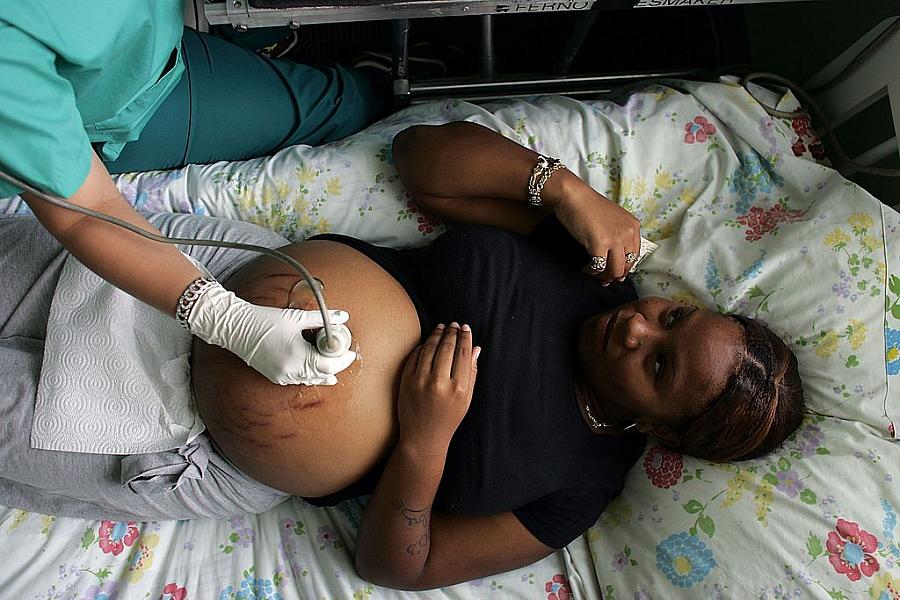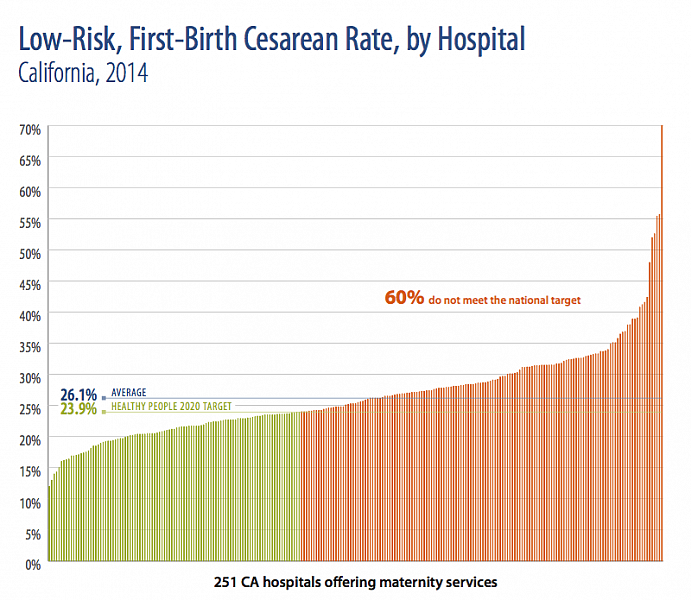In California, there are still huge disparities in maternity care

Photo: Joe Raedle/Getty Images
Sometimes I wonder why so many worthy data-heavy reports and almanacs come out in June, when thoughts flit toward summer vacations and the online pursuit of grill accessories.
But such is the curse of our seasonal bounty, at least in children’s health. Last week, I toured a few highlights from the annual KIDS COUNT report; this week, those of us who write about children’s health in the nation’s most kid-filled state have a whole new almanac from the California Health Care Foundation to nibble on.
For most reporters, reports such as these, with their constellations of data points and easily digestible color tables, are the kind of thing you pull off the digital shelf when you’re on deadline and need to swiftly put a local hospital or county statistic into broader context. But the pre-digested summary data in these reports are also a useful for checking in on important health care trends that are worth keeping tabs on any time of year.
For example, I’ve written a number of times about efforts to curb the rate at which doctors perform C-sections. While the C-section rates in California and nationwide may appear to be leveling off in recent years, their numbers still widely exceed well-established target rates:

While you might that note the state’s average of 26 percent for first-birth C-sections is barely over the target rate of about 24 percent, it’s not until you take in the distribution of 251 hospitals throughout the state that you appreciate how many care centers are way above the target rate as of 2014 (see below). There are also story leads here: Any health reporter worth his or her notebook would be most eager to know what hospital is responsible for that sky-high line at far-right that seemingly has a C-section rate upwards of 70 percent. Can that be true? And if so, what’s going on here?

As this blog has discussed before, the fact that some hospitals are still performing way more C-sections than necessary has implications for health costs. For commercially insured patients, the average vaginal birth costs just over $15,000 in California, while the average C-section comes in at over $22,000.
But those are just average costs. If the Dartmouth Atlas has tutored a generation of health care reporters on the importance of looking at geographic variability in pricing, then it’s worth noting that in the central San Joaquin Valley, C-sections average just over $14,000, while two hours to the west in Monterey, the price more than doubles to just over $35,000. Drive a little, save a lot, to steal a phrase from California car dealerships.
Here are a few other notable points from the latest CHCF almanac:
- The number of California babies born with neonatal abstinence syndrome — caused by pregnant moms taking opioids — increased 75 percent from 2008 to 2012, from 2.9 to 5.6 infants per 1,000. Black babies are more likely to be affected: 10 per 100,000 are born with the condition, compared to an average of 5.6 per 100,000 for all races.
- There are lingering disparities in prenatal care as well. An estimated 86 percent of white babies had received prenatal care in the first trimester, while only 76 percent of African American births had received such care. That’s below the 78 percent target rate called for by Healthy People 2020.
- The number of licensed midwives in the state is modest, but growing: The number doubled from 179 in 2007 to 361 in 2014. For reporters, it’s worth looking at what’s driving up that number so quickly over a modest seven-year span.
- The majority of California babies are born to parents who are poor or have modest means: 62 percent of all births are to families with household incomes at less than 200 percent of the federal poverty level. Forty-three percent of births are to families under 100 percent of the poverty level.
- A bright spot: Around 2007, California started to really pull away from the rest of the country in lowering its maternal mortality rate. As of 2013, mothers died at a rate of 7.3 per 100,000, compared with 22 per 100,000 nationwide. While California has made notable gains in bringing its maternal mortality rate down, the nationwide rate has grown considerably in recent years.
- The bad news: A huge racial disparity in maternal mortality rates is one of the report’s most disturbing reminders. As of 2013, African American mothers were more than three times more likely to die during or following childbirth than white mothers in California, and more than five times more likely to die than Latina moms.
[Graphs above courtesy CHCF's "Maternity Care in California: Delivering the Data."]

